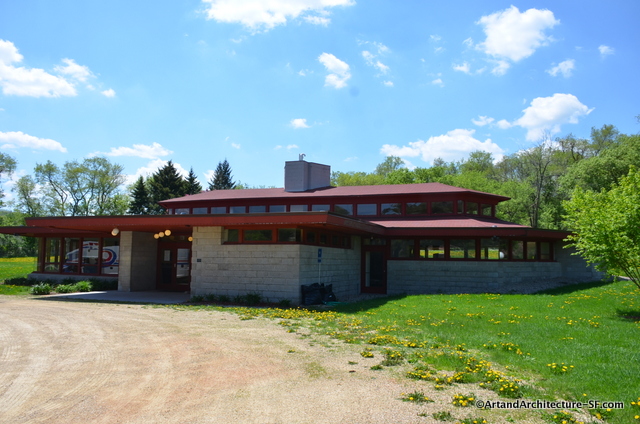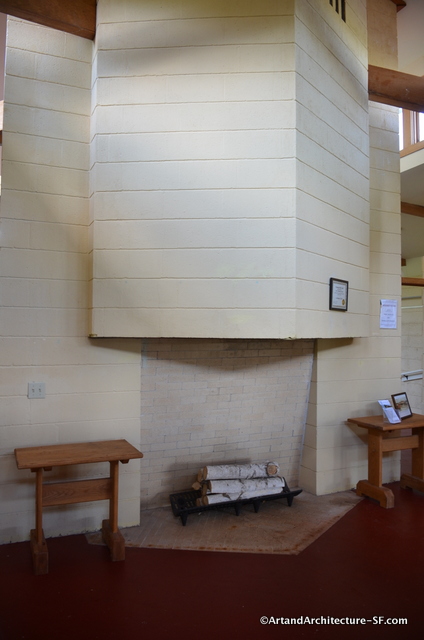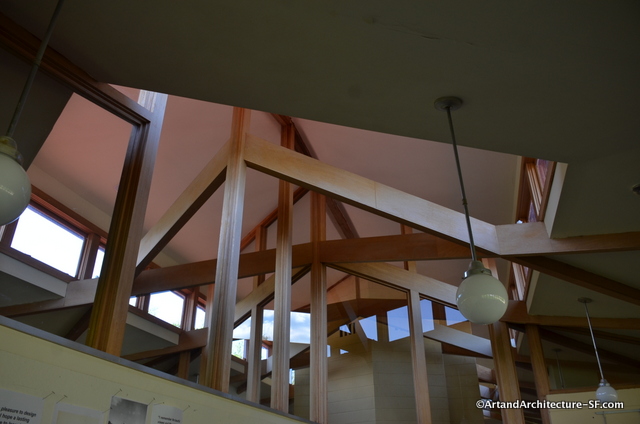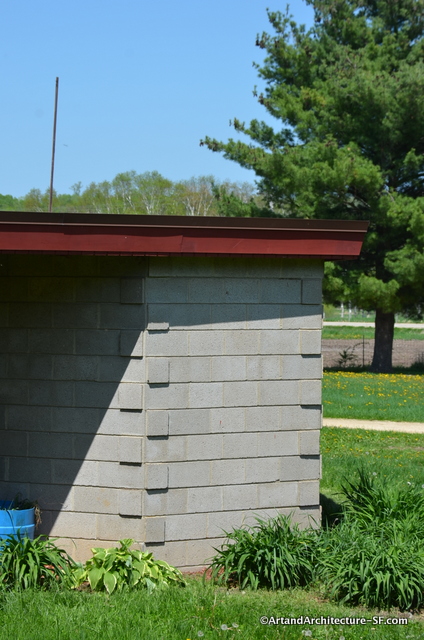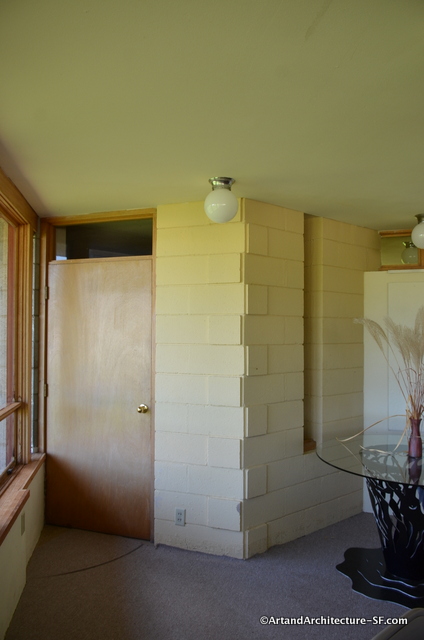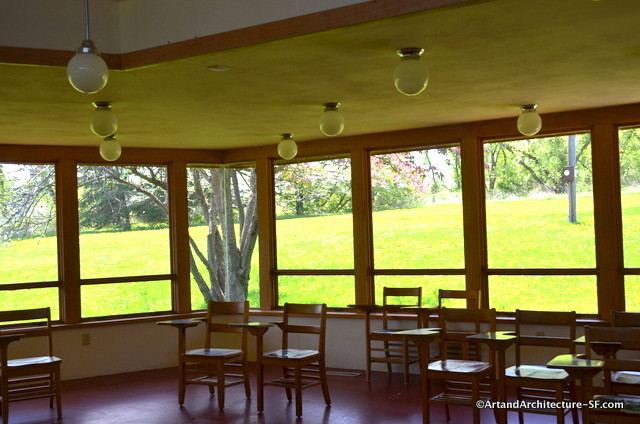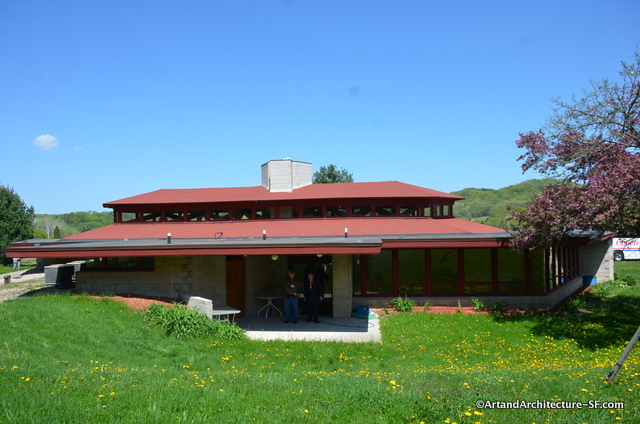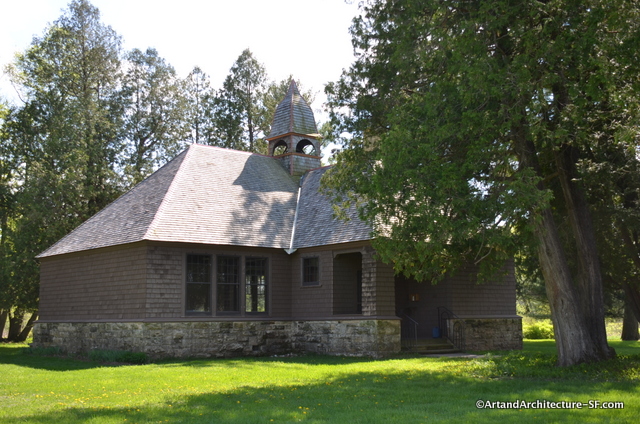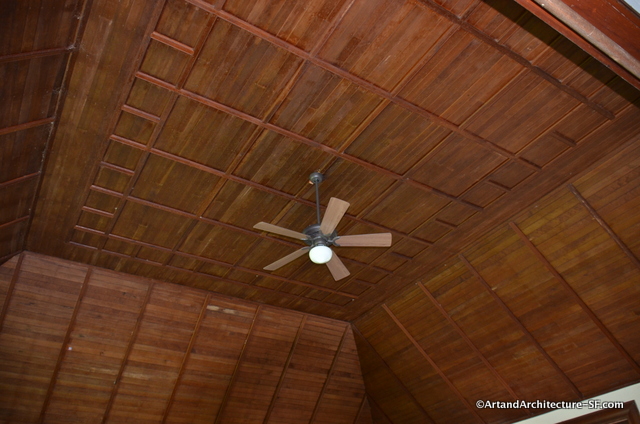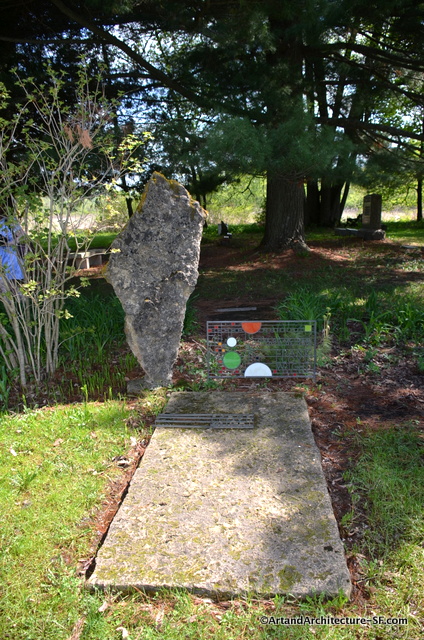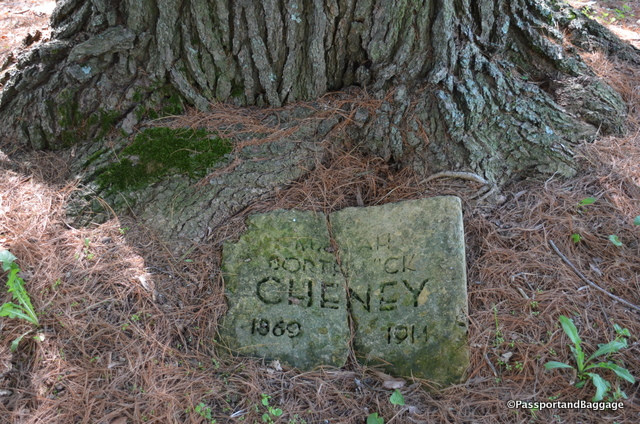Spring Green, Wisconsin

So very much has been written about Taliesin that it seems silly to write a post about it, but it has been on my list of architectural sights to see ever since my father took me to Taliesin West when I was 10.

Taliesin was named in honor of FLW’s Welsh heritage, it was the name of a druid bard, and literally means “shining brow.” The structures wrap around the ridge of the hill, embracing the site and standing as a “brow.”

A lovely example of some of the stone work with a peek into the root celler on the right
Taliesin (or Taliesin East, following the construction of a Taliesin West in 1937) was the home and studio of the great American architect, Frank Lloyd Wright. Designed by Wright himself, the building was built in 1911, and underwent several changes before being finalized as its current iteration in 1937.

The farm portion of the property, this was the old cow and horse barn area
Wright designed the Taliesin structure two years after leaving his first wife and home in Oak Park, Illinois with Mamah Borthwick. The design of the original building was consistent with the design principles of the Prairie School, emulating the flatness of the plains and the natural limestone outcroppings of Wisconsin’s Driftless Area.

The Taliesin house had three sections: two broad portions on either end and a narrow connecting loggia. Wright described, the house as “low, wide, and snug.”
Wright chose yellow limestone for the house from a quarry of outcropping ledges on a nearby hill. These stones were laid in long, thin ledges, evoking the natural way that they were found in the quarry and across the Driftless Area. Plaster for the interior walls was mixed with Sienna, giving the walls a golden hue resembling the sand on the banks of the nearby Wisconsin River. The outside plaster walls were similar but mixed with cement, resulting in a grayer color. Windows were placed so that sun could come through openings in every room at every point of the day. The finished house measures approximately 12,000 square feet.

Wright had a passion for Japanese art and his homes showed the Japanese influence in his work. He first became interested in his early 20’s, and within a decade, he was an internationally known collector of Japanese woodblock prints.
In 1885, at the age of 18, Wright met architect Joseph Silsbee, who was building a chapel for Wright’s uncle in Helena Valley, Wisconsin. The following spring, Wright went to work for Silsbee’s firm in Chicago.
Silsbee’s cousin, Ernest Fenollosa, happened to be the world’s leading Western expert on Japanese art at the time. It is not known whether the young Frank Lloyd Wright ever met Fenollosa in person. However, it is known that Wright admired his views, and appears to have obtained his first Japanese woodblock prints from him.
Wright, like Fenollosa, felt that “the Japanese print is an organic thing,” and his 1912 book on the subject, “The Japanese Print: An Interpretation,” was really a general treatise on aesthetics based largely on Fenollosa’s ideas.
Wright’s favorite Japanese print artist, Katsushika Hokusai (1760–1849), had published sketches illustrating how the subtleties of living forms could be constructed from simple mechanical shapes.
Wright’s collection of woodblock prints by artists, both Hokusai and Utagawa Hiroshige, have been removed from the house and many have been repatriated back to Japan, others are in storage until Taliesin can provide a better temperature controlled environment.
The house, however, is not lacking in Japanese art and influences.

*
Many of Wright’s most famous buildings were designed while he was at Taliesin East, including Fallingwater, “Jacobs I” (the first Wright-designed residence of Herbert and Katherine Jacobs), the Johnson Wax Headquarters, and the Solomon R. Guggenheim Museum.
Possibly even on these two drafting tables that were gifts of his first major employer and mentor Louis Sullivan.

Taliesin would burn three times, and as Wright did not have enough money for its reconstruction after the third fire, a group of former clients organized a partnership to pay Wrights debts. To keep Taliesin economically viable, the society devised programs in which students paid an enrollment to be able to learn and “experience the lifestyle of Frank Lloyd Wright”. This program still continues at both Taliesin East and Taliesin West.

A small wood sculpture just inside the front door

This is one of FLW’s signature lamps, copies of which can still be purchased today

Wright was also well known for his furniture that graced most every home he built. These are his barrel chairs, a high back chair and dining room table. Notice the Japanese print behind the table.

A look towards the windows in the great room that command a stunning view of the Wyoming Valley

Details and musical instruments found behind the piano in the great room

While not a true cantilever, as there is rock support in the middle, this little “Bird Porch” lets you stand in nature.

Chinese screens incorporated into one of the sitting rooms

Classic Wright geometric ornamentation

Broken pottery inlaid into one of the many fireplaces throughout the home

The work space of Wrights bedroom

A pergola made from old plumbing pipes and barn doors

A view of one end of the drafting room area with a piece of ornamentation from a Louis Sullivan designed building
 One could spend days just studying the roof lines of a Frank Lloyd Wright home, and Taliesin East delights at every turn.
One could spend days just studying the roof lines of a Frank Lloyd Wright home, and Taliesin East delights at every turn.

There are many tours available at Taliesin East. They all begin at the Wright designed Vistors center that also houses a small restaurant and excellent book and gift store.
I was here with the Victorian Society in America on the Spring Study Tour and we took the two hour house tour, which is the most complete way to see the home.
The tour was $54 and they run every day from May to October and weekends the rest of the year.
It was a true thrill and a tour that one could take over and over to truly appreciate the genius of Frank Lloyd Wright.

Metal spire on the Visitors Center
